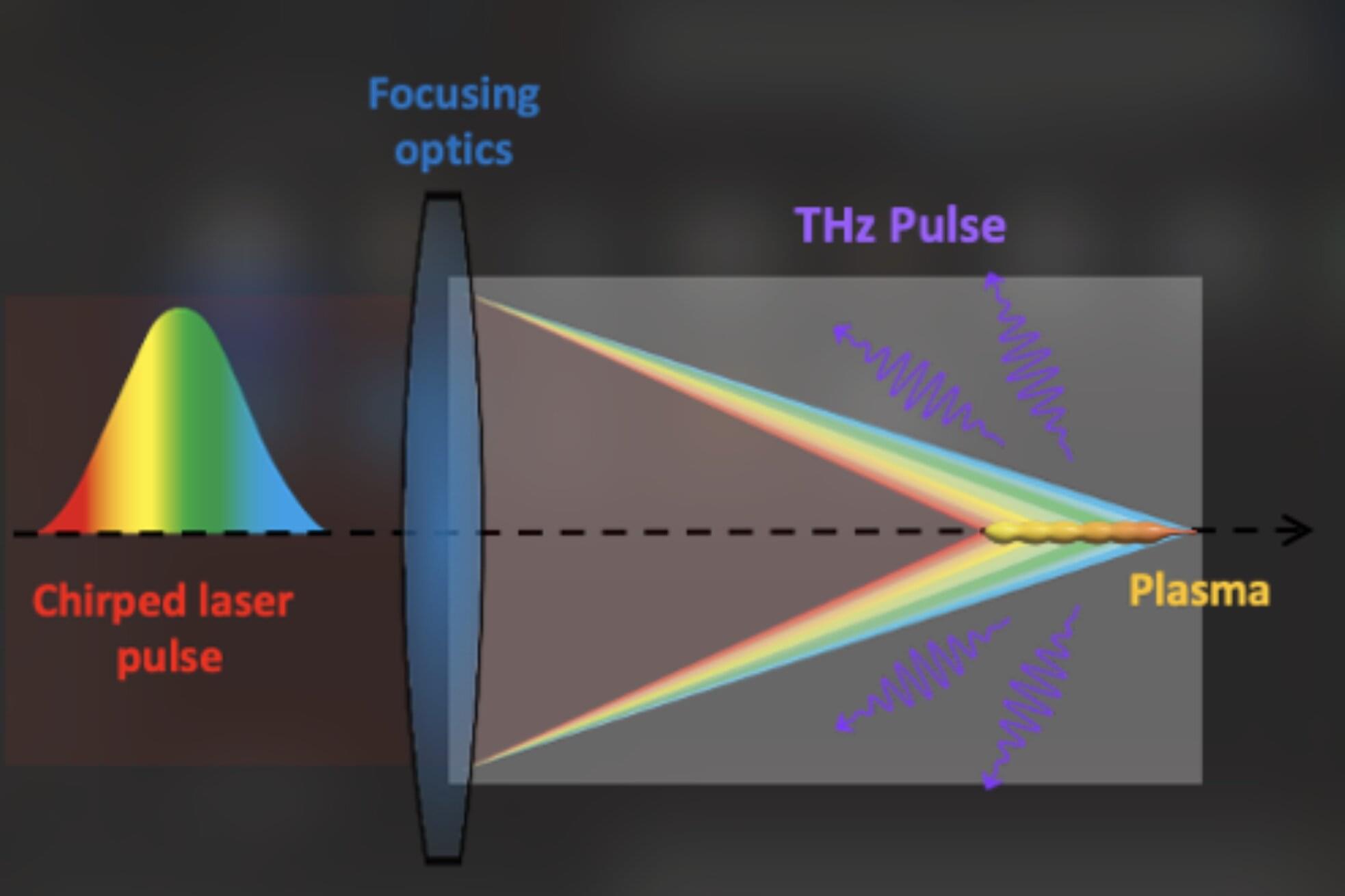Terahertz radiation (THz), electromagnetic radiation with frequencies ranging from 0.1 and 10 THz, is central to the functioning of various technologies, including imaging, sensing and spectroscopy tools. While THz radiation waves have been manipulated in different ways over the past decades, controlling their direction in air has so far remained a challenge.
Researchers at Ecole Polytechnique (CNRS) at Institut Polytechnique de Paris recently demonstrated the steering of laser-produced THz radiation in air, using a recently introduced technique dubbed “flying focus.” Their paper, published in Physical Review Letters, could open new possibilities for the manipulation of THz electromagnetic waves, which could in turn be leveraged to develop new technologies.
“My group has been working on the generation of THz radiation by laser-induced filaments in air for almost 20 years,” Aurélien Houard, senior author of the paper, told Phys.org. “A major advantage of these filaments is that they can be generated at a large distance from the laser in the atmosphere. However, the THz emission remained confined close to the laser axis, which is not convenient for remote detection.”
